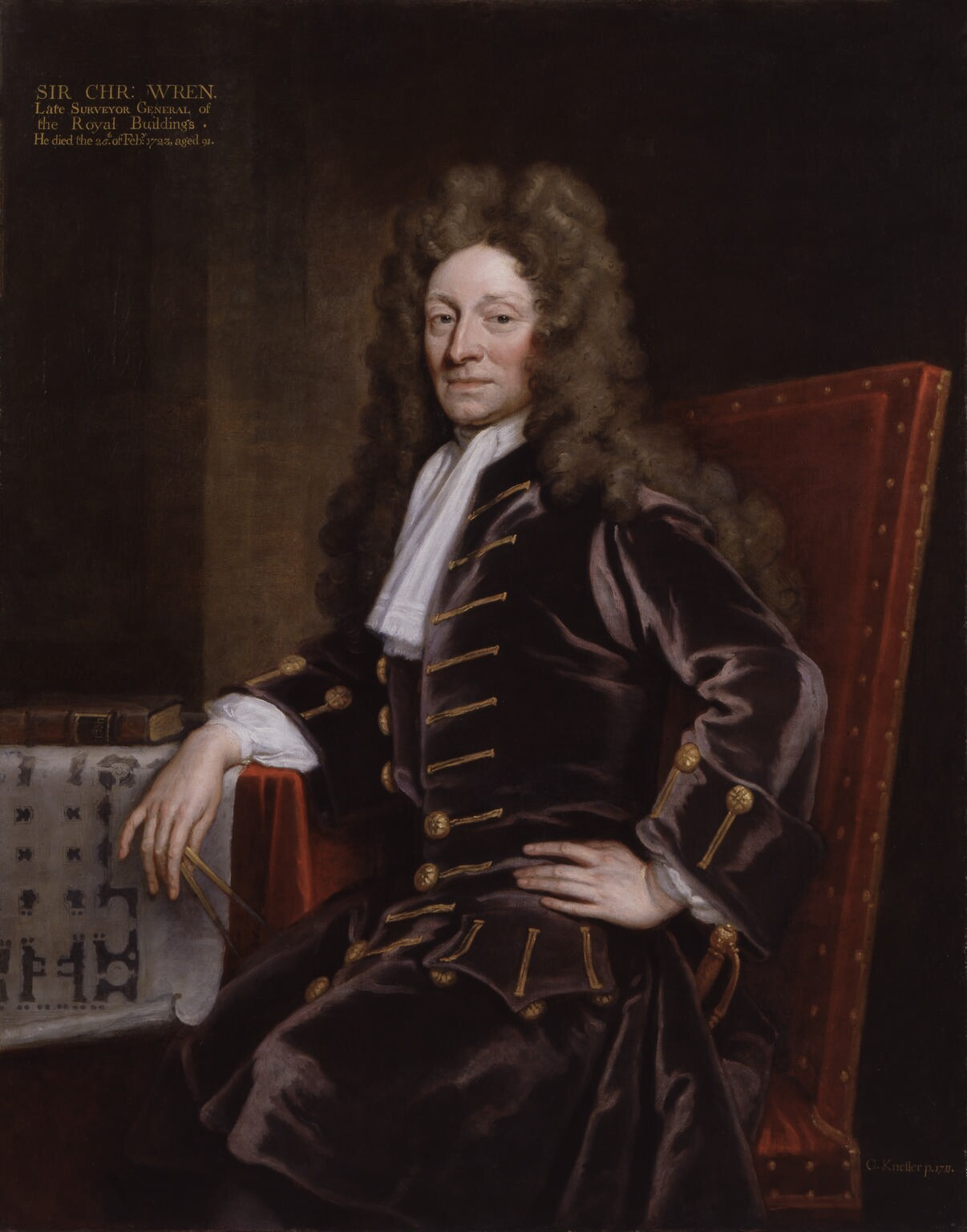
Christopher Wren
Sir Christopher Wren FRS (/rɛn/;[2] 30 October 1632 [O.S. 20 October] – 8 March 1723 [O.S. 25 February])[3][4] was an English architect, astronomer, mathematician and physicist who was one of the most highly acclaimed architects in the history of England.[4] Known for his work in the English Baroque style,[4] he was accorded responsibility for rebuilding 52 churches in the City of London after the Great Fire in 1666, including what is regarded as his masterpiece, St Paul's Cathedral, on Ludgate Hill, completed in 1710.[5][6]
For other uses, see Christopher Wren (disambiguation).
SirChristopher Wren
30 October 1632 [O.S. 20 October]
8 March 1723 [O.S. 25 February]
(aged 90)[1]
Designer of 54 London churches, including St Paul's Cathedral, as well as many notable secular buildings in London after the Great Fire
4
Christopher Wren the Elder
Mary Cox
The principal creative responsibility for a number of the churches is now more commonly attributed to others in his office, especially Nicholas Hawksmoor. Other notable buildings by Wren include the Royal Hospital Chelsea, the Old Royal Naval College, Greenwich, and the south front of Hampton Court Palace.
Educated in Latin and Aristotelian physics at the University of Oxford, Wren was a founder of the Royal Society and served as its president from 1680 to 1682.[4] His scientific work was highly regarded by Isaac Newton and Blaise Pascal.
Freemasonry[edit]
Since at least the 18th century, the Lodge of Antiquity No. 2, one of the four founding Masonic Lodges of the Premier Grand Lodge of England in 1717, has claimed Christopher Wren to have been its Master at the Goose and Gridiron at St. Paul's churchyard.[53] Whilst he was rebuilding the cathedral he is said to have been "adopted" on 18 May 1691 (that is, accepted as a sort of honorary member or patron, rather than an operative). Their 18th-century maul with its 1827 inscription claiming that it was used by Wren for the foundation stone of St. Paul's, belonging to the Lodge and on display in the Library and Museum of Freemasonry in London, corroborates the story. James Anderson made the claims in his widely circulated Constitutions while many of Wren's friends were still alive, but he made many highly creative claims as to the history or legends of Freemasonry. There is also a clear possibility of confusion between the operative workmen's lodges which might naturally have welcomed the boss, and the "speculative" or gentlemen's lodges which became highly fashionable just after Wren's death. By the standards of his time, a gentleman like Wren would not generally join an artisan body; however the workmen of St Paul's cathedral would naturally have sought the patronage or "interest" of their employer, and within Wren's lifetime there was a predominantly gentlemen's Lodge at the Rummer and Grapes, a mile upriver at Westminster (where Wren had been to School).
In 1788, the Lodge of Antiquity thought they were buying a portrait of Wren which now dominates Lodge Room 10, in the same building as the Museum; but it is now identified with William Talman, not Wren. Nevertheless, this recorded event and many old records attest to the fact that Antiquity thought that Wren had been its Master, at a time when it still held its minute books for the relevant years (which were lost by Preston at some date after 1778).
The evidence of whether Wren was a speculative freemason is the subject of the Prestonian Lecture[54] of 2011, which concludes on the evidence of two obituaries and Aubrey's memoirs, with supporting materials, that he did indeed attend the closed meeting in 1691, probably of the Lodge of Antiquity, but that there is nothing to suggest that he was ever a Grand Officer as claimed by Anderson.
Wren appears, or is mentioned in several Restoration-era novels or movies.